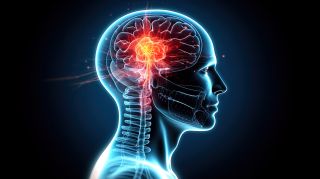Chronic Pain
4 Alternative Treatments for Chronic Pain
Nociplastic pain underlies many chronic pain conditions.
Updated June 7, 2024 Reviewed by Kaja Perina
Key points
- Chronic pain commonly involves nociplastic pain.
- Nociplastic pain causes pain to spread to a larger area.
- Alternative treatments include acupuncture, cannabinoids, low-dose naltrexone, and low-dose ketamine.

Chronic pain often involves nociplastic pain, a type of pain that arises from abnormal pain processing in the brain and nerves. This pain type underlies the most common chronic pain disorders, including chronic back pain, migraines, irritable bowel syndrome, and chronic pelvic pain.
Currently, there are three medication classes used to treat nociplastic pain. They are called “neuropathic agents” and they work by calming the nervous system and the number of pain signals sent. I tell patients they turn down the volume of the pain but don't eliminate it completely. They include the anticonvulsants (i.e., gabapentin), tricyclics (i.e., amitriptyline), and SNRIs (serotonin and norepinephrine reuptake inhibitors; i.e., duloxetine).
Nociplastic pain is difficult to treat with many therapies providing only modest benefits. Here are four other treatment considerations with some evidence of benefit.
4 Treatment Options for Nociplastic Pain
1. Acupuncture is a nonmedication option for nerve and nociplastic pain. It is an Eastern medical therapy that inserts tiny needles in specific points in the body to bring balance to the nervous system. Acupuncture may be used alone or in combination with medical therapy for a variety of conditions such as migraine, back pain, irritable bowel, and fibromyalgia.
2. Cannabinoids are a group of substances found in the cannabis plant. Two well-known cannabinoids are THC and cannabidiol (CBD). Cannabidiol is another option for treating nociplastic pain and muscle spasms. Many people find CBD helpful for nerve pain and muscle spasms, especially when they flared at night. Using CBD drops before bed is a common regimen. And, unlike THC, CBD promotes brain health rather than harms it.
3. Low-dose naltrexone (LDN) has shown promise for reducing nociplastic pain. LDN may help by decreasing inflammation in the nervous system. Chronic pain doctors have seen effectiveness from doses ranging from 1 mg to 5 mg daily.
4. Low-dose ketamine is an emerging treatment for chronic pain. Recent studies suggest that low-dose ketamine may help in the treatment of pain and depression. Researchers are evaluating low-dose ketamine for pain syndromes, such as headaches, fibromyalgia, and low back pain. To learn if ketamine is a viable option for you, consult a pain specialist. At high doses, ketamine works as an anesthetic agent, so you want a doctor knowledgeable in its use.
Bottom Line
Initial treatment for nociplastic pain includes neuropathic agents. Unfortunately, these medications rarely provide complete relief from the pain. Alternative treatments include acupuncture, cannabidiol, low-dose naltrexone, and low-dose ketamine.
References
1. Mary-Ann Fitzcharles et al., “Nociplastic Pain: Towards an Understanding of Prevalent Pain Conditions,” The Lancet 397, no. 10289 (May 2021): 2098–2110.
2. Ivan Urits et al., “A Comprehensive Review of Alternative Therapies for the Management of Chronic Pain Patients: Acupuncture, Tai Chi, Osteopathic Manipulative Medicine, and Chiropractic Care,” Adv Ther 38 (2021): 76-89.
3. Jeremy D Henson et al., “Tetrahydrocannabinol and Cannabidiol Medicines for Chronic Pain and Mental Health Conditions,” Inflammopharmacology 30 (2022): 1167-1178.
4. Kim S Philip and Michael A Fishman. “Low-dose Naltrexone for Chronic Pain: Update and Systemic Review,” Current Pain and Headache Reports (2020): 24:64.
5. Steven P. Cohen et al., “Consensus Guidelines on the Use of Intravenous Ketamine Infusions for Chronic Pain From the American Society of Regional Anesthesia and Pain Medicine, the American Academy of Pain Medicine, and the American Society of Anesthesiologists,” Regional Anesthesia and Pain Medicine 43, no. 5 (July 2018): 521-546.
6. Joel P. Castellanos et al., “Chronic Pain and Psychedelics: A Review and Proposed Mechanism of Action,” Regional Anesthesia and Pain Medicine 45, no. 7 (May 2020): 486–494.


